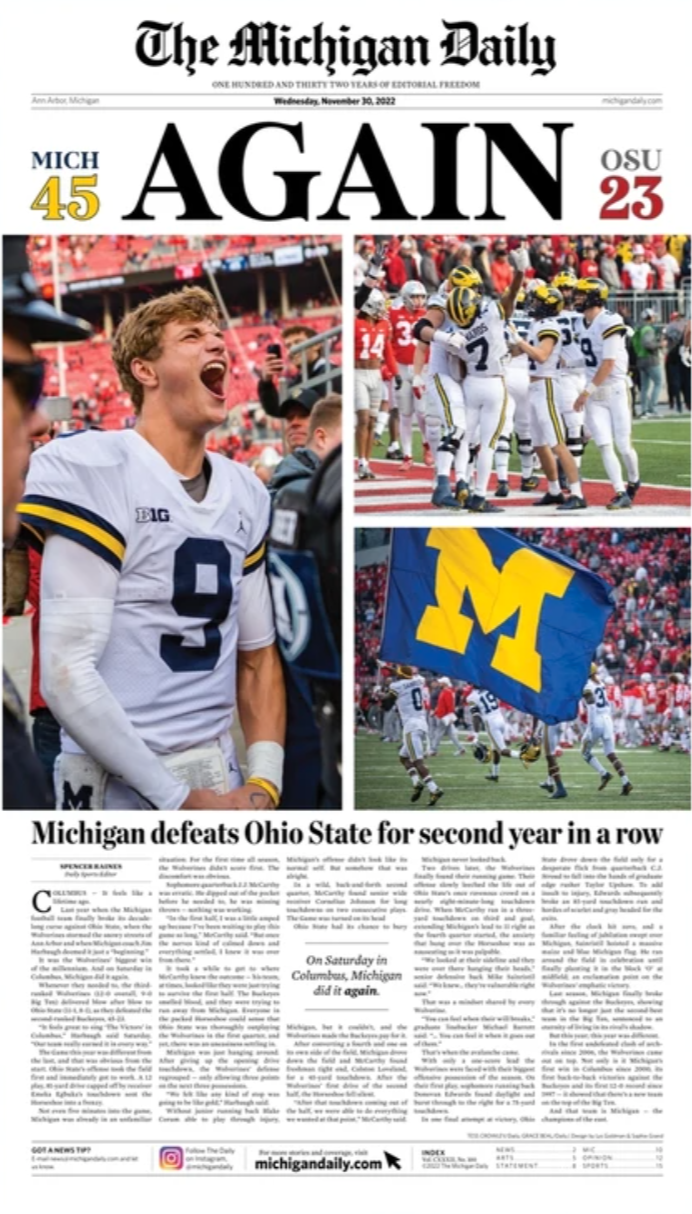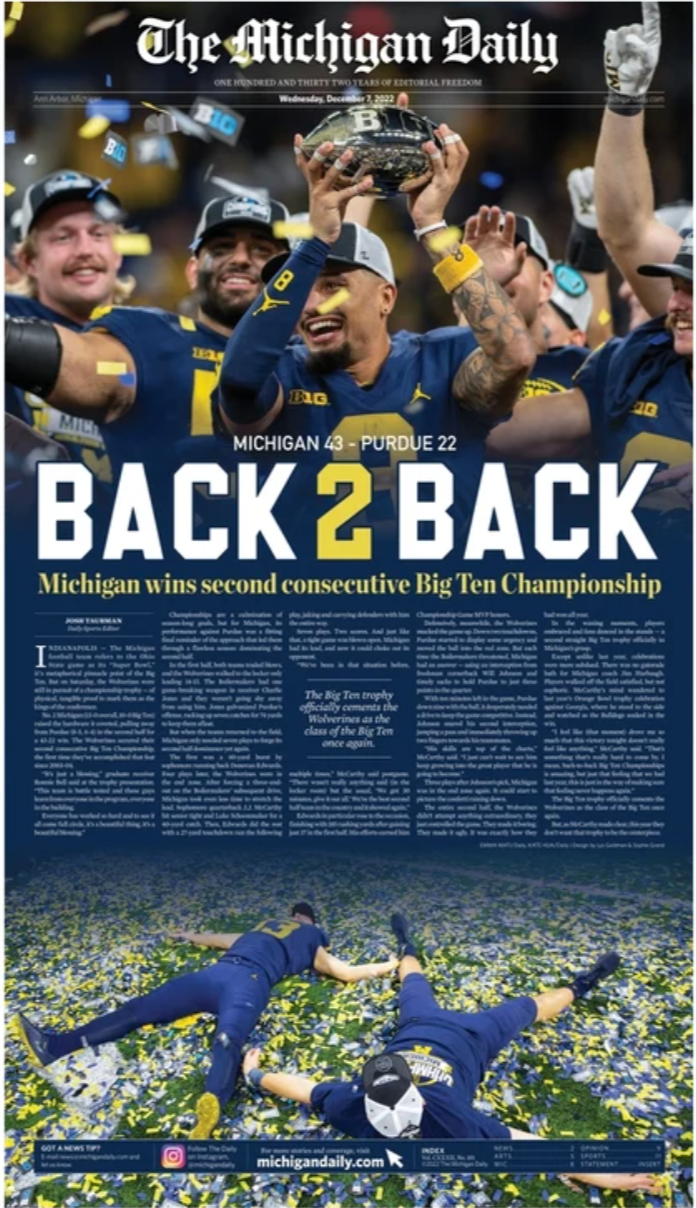Project:
Product Launch and Sales Infrastructure: Leveraging Creative Assets to Make a College Newspaper Profitable
Description:
As Managing Sports Editor of The Michigan Daily, I worked with our Business Manager, my co-Managing Editor, and Editor in Chief to establish sales infrastructure and a product pipeline that has allowed the student newspaper to be profitable ever since.
I spearheaded the pitch and strategy to generate sales, and I managed the development and creation of the products sold.
In year one, we generated over $50,000 in revenue. In year two, after working to refine our promotion and distribution process, that number raised to over $80,000. This project accounts for more than 50% of revenue the paper generates each year since it was implemented.
The inspiration:
After Michigan’s 2021 win over Ohio State, there was high demand by The Michigan Daily’s readership for copies of the newspaper, specifically with interest in the cover design. We began taking direct sales to make more copies for the newspaper, but with interest growing for just the cover art, we did a pre-order run of the cover as a poster. These were then packaged and shipped by volunteers, which — after such a large volume of orders and a non-dedicated workforce — took many weeks. This resulted in many people requesting refunds on their order, returning their order, and overall loss of sales. It was inefficient to say the least — but it taught us a lesson, and showed there was demand for future covers.
The next time an opportunity came around, I was going to guarantee we were ready.
The execution:
The first thing we needed to address was the product: What were we going to sell? Was it just covers? Whole papers? The design itself?
While there was some demand for full papers, I determined that what was in most demand were our back cover designs, known as “Sports Monday.” The occasional groundbreaking front cover could generate demand, but people wanted to commemorate Michigan sports moments above all else. Posters were the most popular format to purchase these designs.
Then came the all-important question: How are we going to sell and deliver these?
This was our biggest problem before. We didn’t have the man power to sell and produce these ourselves. It resulted in lost revenue, and we had to halt orders coming in. For the best results, this couldn’t happen again. We had to outsource this. Yes, we were going to lose on our per-unit margin by contracting this shop out versus selling on our own site. But, I calculated we were likely to gain much more in revenue by raising our product capacity and reducing product returns. We ultimately contracted this out to Redbubble, as it would be easy to direct customers to the landing page and it was a more favorable margin than other producers and distributors.
Next question: How often?
Would we only sell the cover art of large events or all events? This required testing. By using basketball and hockey coverage (which has less demand than football cover art), we gauged if it would be worth it to put every cover design we did on our shop, or if the clutter took away from sales of our more noteworthy designs. The answer: People who were dedicated fans to specific teams would buy any cover they liked. We were not limited to football or big moments, so every design would go to our shop.
How are we advertising these products?
The primary advertising tool for these were on the newspaper’s Sports Section Twitter account, as well as the newspaper’s main account and Instagram. In small bursts, only around larger events, we would use some paid advertising or take out a house ad on our own website.
The creative:
The cover designs were usually collaborative projects. As the Managing Sports Editor, I oversaw each of them and would provide creative input, direction, design & copy edits, and often write headlines and copy for the cover art.
The process began by identifying the most important Michigan sports moment from the weekend, choosing an article written by the section on that topic. This was usually decided by myself and my co-Managing Editor. Then, I led a collaborative brainstorming session on headlines. Tens, sometimes more than one-hundred, headlines would be proposed, tossed out, and narrowed down. Eventually, we would decide based on consensus.
This would then lead to the design. We had dedicated designers, who I would then give instruction on the overall art, tone, and direction of the cover. I would also request the photographers share photo folders with the images that were needed for the cover art. I would then work with the designer to edit and iterate on their design until it was approved.
We would then take this design, export it in all the different file formats for our platforms (social media, the printer, poster, online PDF). This would be the product we would sell.


